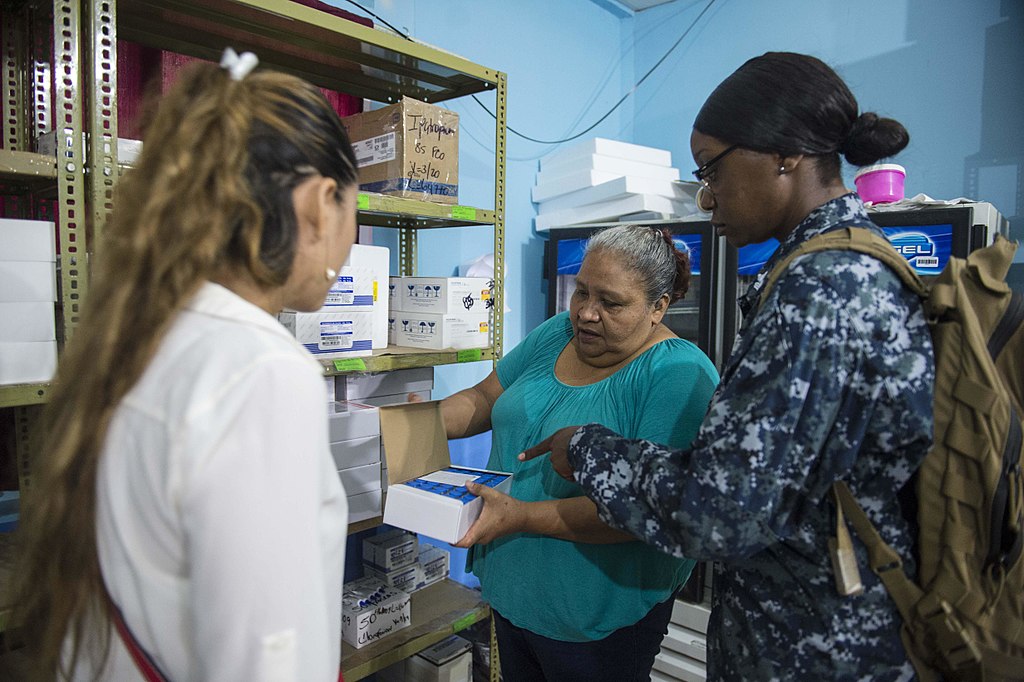On October 1, Secretary of State Hillary Clinton and Health and Human Services Secretary Kathleen Sebelius apologized to the government of Guatemala for a “clearly unethical” U.S.-sponsored study of venereal disease conducted there between 1946 and 1948. Dr. John C. Cutler, a physician with the U.S. Public Health Service (PHS), led experiments funded by the National Institutes of Health (NIH) in which nearly 700 Guatemalans were intentionally infected with syphilis and gonorrhea without their consent. Credit for the grisly discovery belongs to Susan M. Reverby, a medical historian at Wellesley College. (See a PDF of her advanced synopsis.) While researching her second book on the Tuskegee syphilis study, she discovered Dr. Cutler’s papers on the Guatemala study in his archives at the University of Pittsburgh. She reported her findings in a paper for the Journal of Policy History to be published in January. (See a PDF of the draft.) Her research sparked an official investigation that confirmed her claims and led to last Friday’s apology.
We interviewed Reverby via email.
Boston Review: You have written two books on the Tuskegee syphilis study. What light does the Guatemala study throw on it and similar experiments conducted in the United States?
Reverby: The Guatemala study was very different in two ways from what happened in Tuskegee. In Guatemala the men and women were given syphilis. In Tuskegee the men already were in the late latent stage (primarily) of the disease. In Guatemala, there was the intention to treat with penicillin even if not everyone got enough or was treated. In Tuskegee, there was the intention to keep the men from treatment, even if those who survived into the antibiotic era often got to treatment by happenstance or through the assistance of other doctors.
The Guatemala study also shows that the PHS physicians knew about ethical guidelines and were worried that this study had crossed them. I speculate whether this made them think, perhaps, that Tuskegee was therefore not so awful.
I think they both demonstrate the kind of “cowboy” ethics of medicine at a time in which the supposed “greater good” of society, as seen by the researchers, trumped any other consideration.
Have you found any interesting patterns in the formal and informal processes in which these studies were authorized?
This was a period where there were few formal protocols as we know them now. The “best” men (and it was primarily men) spoke to one another. Letters and questions about the science were exchanged. Then the studies would be authorized.
Is there evidence that anyone in the U.S. government outside of the PHS and NIH knew about the Guatemala study?
Yes. There is some discussion that other syphilologists in the United States knew about the study and wanted in on the data. In general, however, the PHS authorities kept it relatively quiet. Nothing in the end was published in English, except for one small report in a Spanish public health journal about the blood testing.
Why did the PHS decide to conduct the study in Guatemala?
This was done because it was the period when the uses of penicillin were still unknown. The PHS was concerned with finding out if it could be used as a prophylaxis—not just as a cure—for syphilis. They needed human studies with people at the acute infectious stage of the disease (i.e., the earliest stage). Guatemala had legalized prostitution and allowed prostitutes to go into the federal penitentiary to provide sexual services. They started the project with infected prostitutes. When this did not provide enough infection, they began the direct-infection part of the study. They worked directly with Juan Funes, a Guatemalan physician who was the head of the venereal disease division of that country’s public health department. Funes had also been trained in the United States by the PHS, as was common. The United States also had strong ties to the Pan American Sanitary Commission (now the Pan American Health Organization), and they cosponsored it as well.
In your synopsis, you write that the Guatemalan government cosponsored the study but that “deception” was “key” in their decision to do so and that aspects of the study were kept hidden from some Guatemalan officials. What was the extent of the Guatemalan government’s participation in the study?
The United States, no matter how powerful, cannot just walk into the federal penitentiary, the state insane asylum, and an army barracks in Guatemala to do this kind of study. Permission had to be granted by those who ran these institutions as well as the VD division of the federal public health department. However, Dr. Cutler makes clear in his correspondence that not everyone was told exactly what they were doing.
Dr. Cutler, who would later participate in the Tuskegee study and go on to have a distinguished career, was recalled as a “much beloved professor” in his 2003 obituary. Some of the top doctors in the United States, including the U.S. surgeon general at the time, Thomas Parran, Jr., supported the study and followed it closely. What do you make of their sensibilities? How could they have done this?
There was a “war” against syphilis and other STDs. They had a battle mentality. They thought they were doing something for the greater good. It was part of the medical culture in research in general, and in STD research as well.
Did anyone at the time voice ethical objections to the study? If so, what happened to them and their objections?
Yes. Dr. R.C. Arnold, one of the key PHS researchers who discovered penicillin’s usefulness against syphilis, was one of those supervising Cutler. He raised questions about the ethics of the research, especially in the asylum. He told Cutler:
“I am a bit, in fact more than a bit, leery of the experiment with the insane people. They can not give consent, do not know what is going on, and if some goody organization got wind of the work, they would raise a lot of smoke. I think the soldiers would be best or the prisoners for they can give consent. Maybe I’m too conservative. . . . Also, how many knew what was going on. I realize that a [patient] or a dozen could be infected, develop the disease and be cured before anything could be suspected. . . . In the report, I see no reason to say where the work was done and the type of volunteer.”
Were you surprised by the State Department’s response to the story?
I knew a few days before I posted the articles that this was possibly the works. I gave my paper originally to Dr. David Sencer, the former CDC director whom I knew from my research on Tuskegee. He asked if he could give it to the CDC before publication. They sent a syphilis expert to check my findings. He concurred. After that it went up the chain of command in the government and to the White House. All this happened during the month of September.
What checks are currently in place to prevent similar unethical practices occurring, e.g., with health studies by U.S. companies in the developing world? Do you believe they are sufficient?
Frankly I am mostly worried about drug trials that get done elsewhere now which we have little control over. In 2008 78 percent of the participants in trials whose data was used by the FDA for new drugs were outside the United States. According to an ABC report, that year, “54 percent of the 11,944 trial sites were foreign” and “less than 1 percent of trial sites outside the US underwent FDA inspection.”
Are there any (further) lessons to draw for public-health research today?
There is still much debate going on over the kinds of oversights we have, especially in foreign trials. The same rules are supposed to apply that apply here. The question becomes: are they onerous, should they be the same, etc. There is lots of debate on this in the bioethics literature.
Do you think other, similar stories are likely to emerge?
I cannot believe that this is the only one, of course. There have to be more. Rather than being horrified by each one, however, we need to endeavor to face them when they come out and to always be vigilant about what we are doing now. It is imperative to remember that Cutler thought he was doing the right thing in the great battle against disease.








